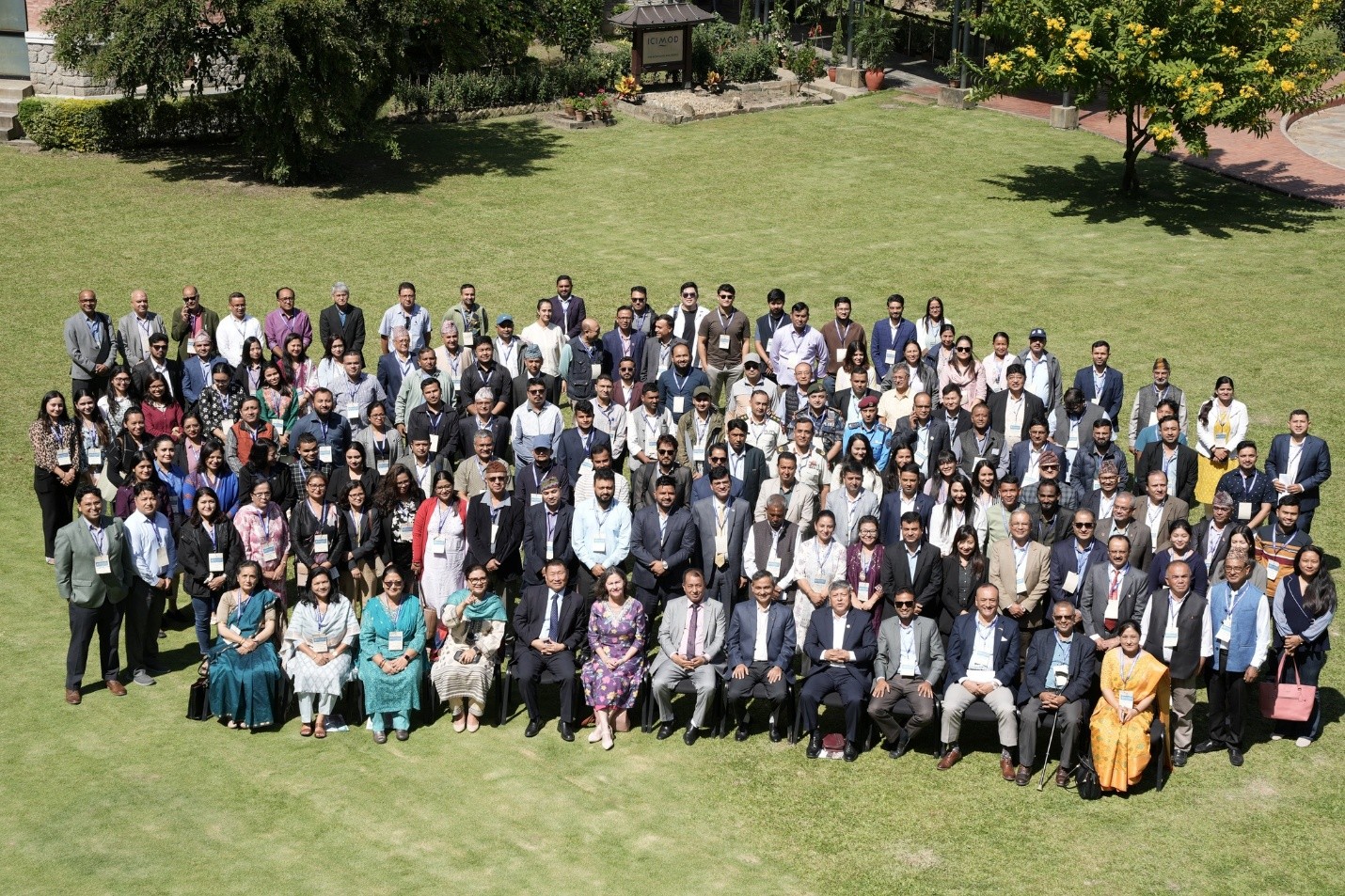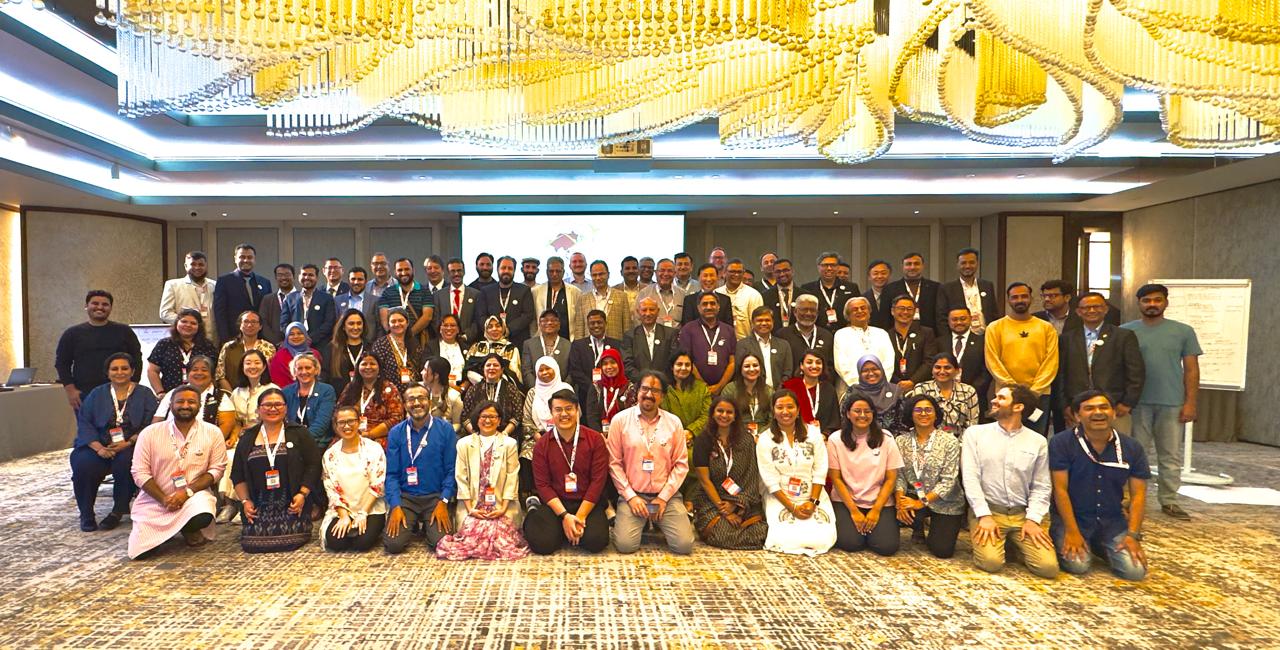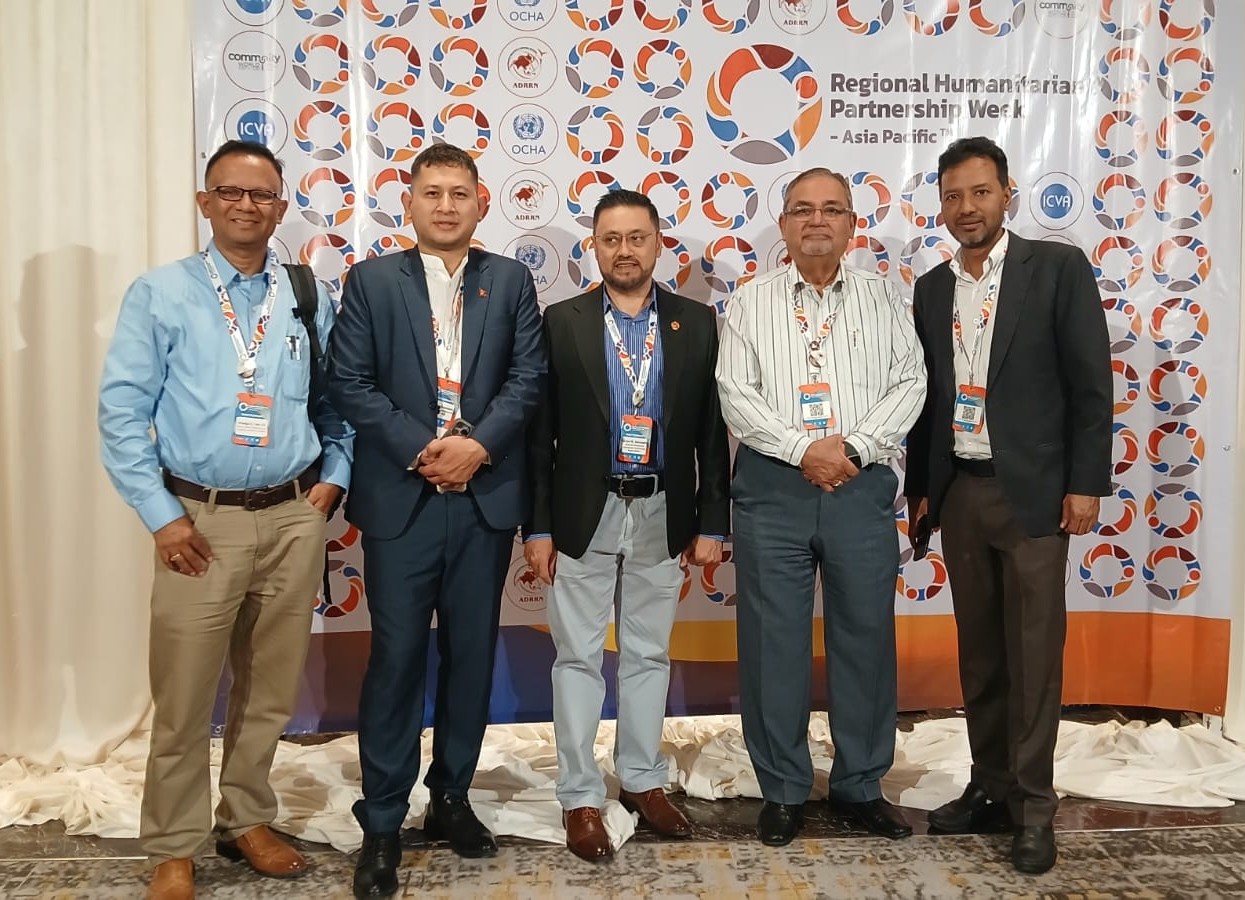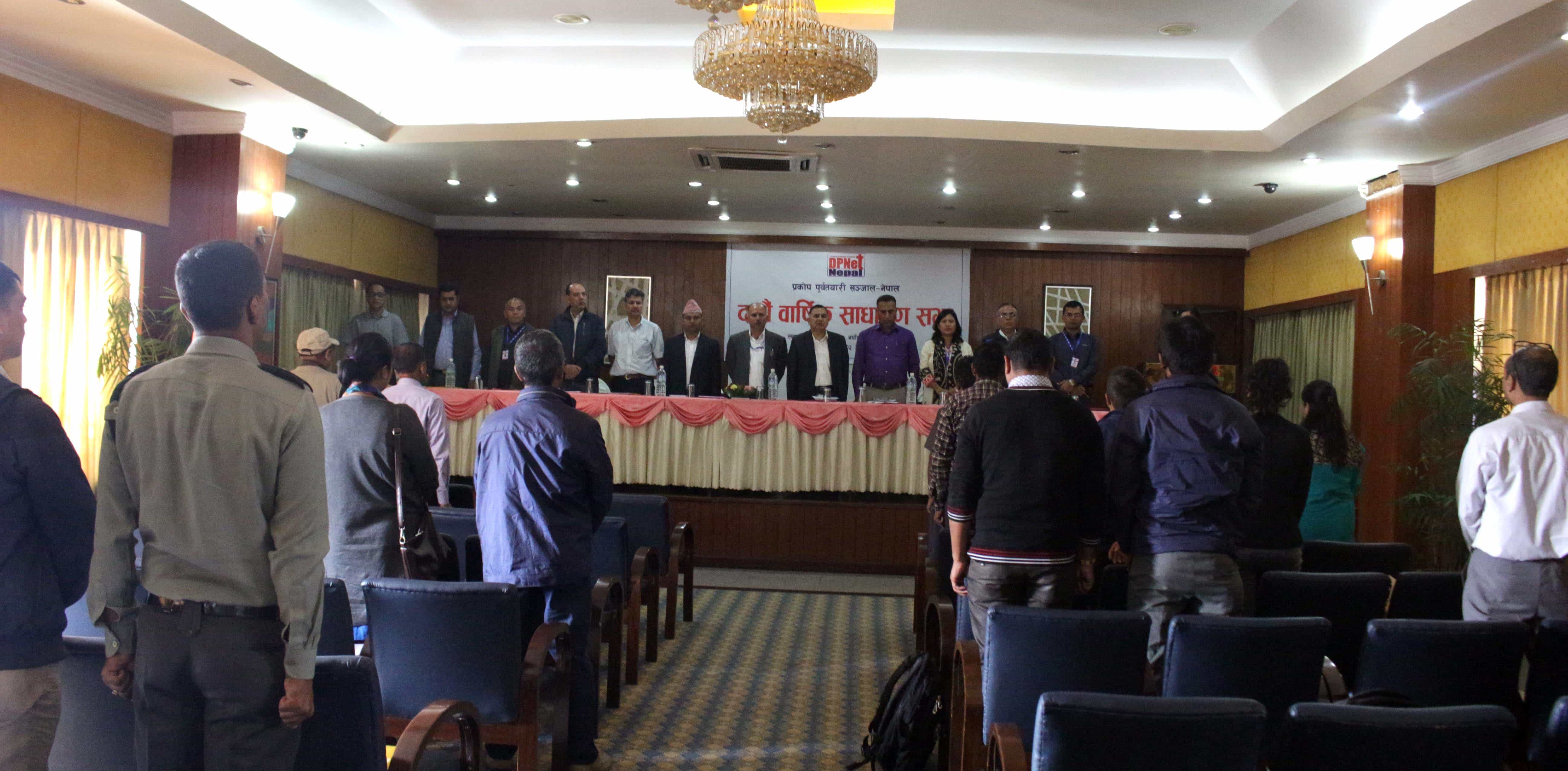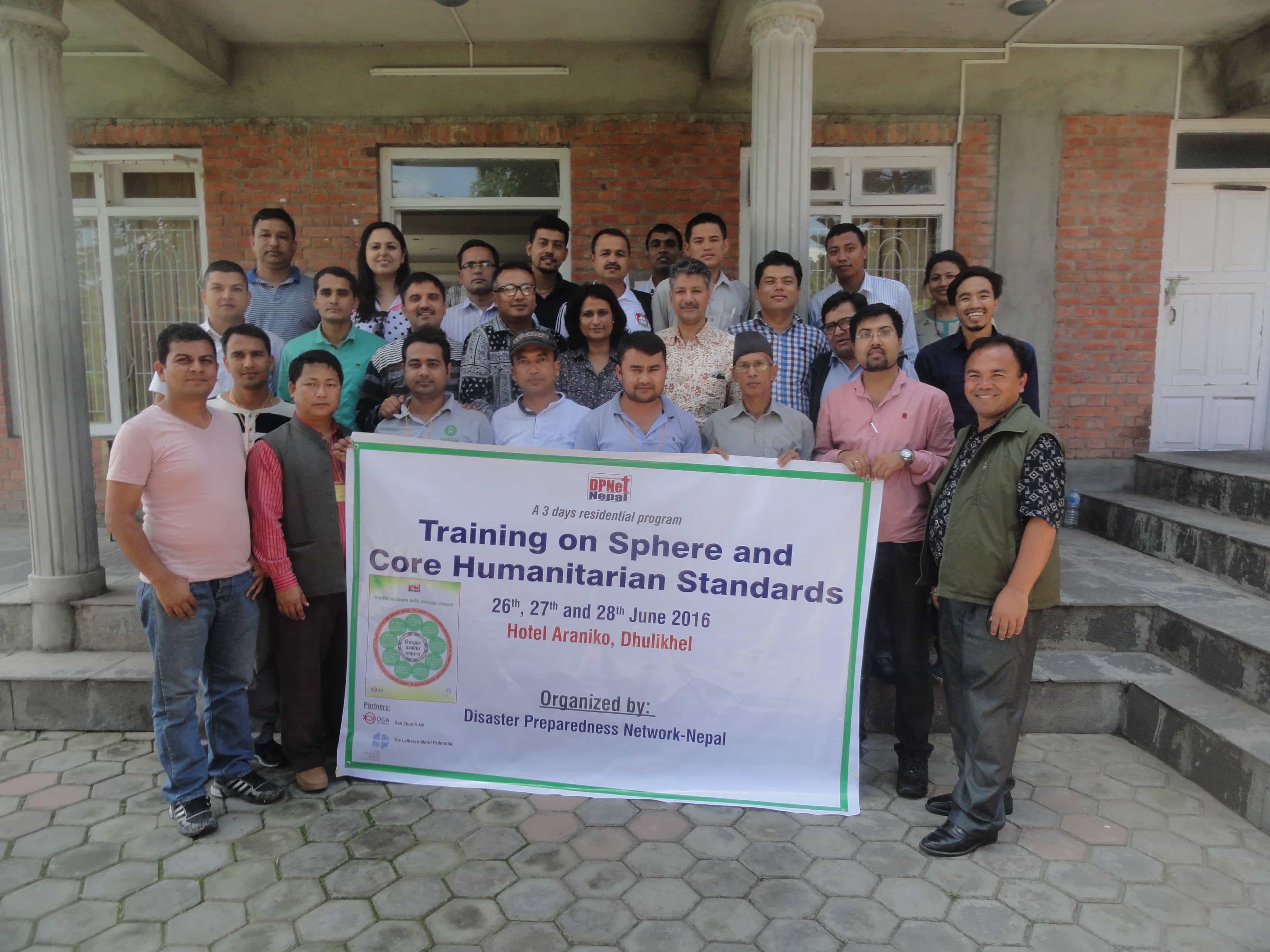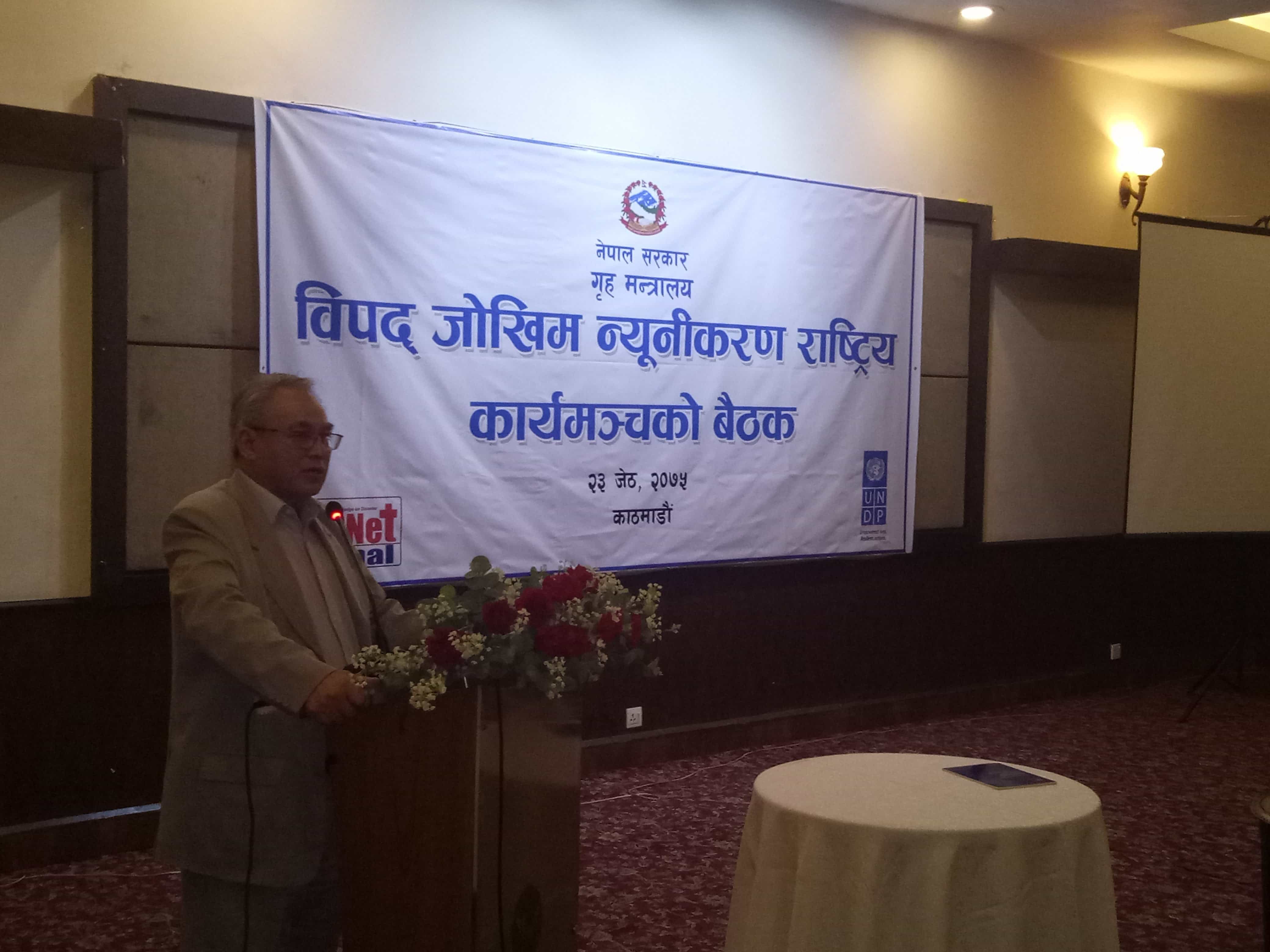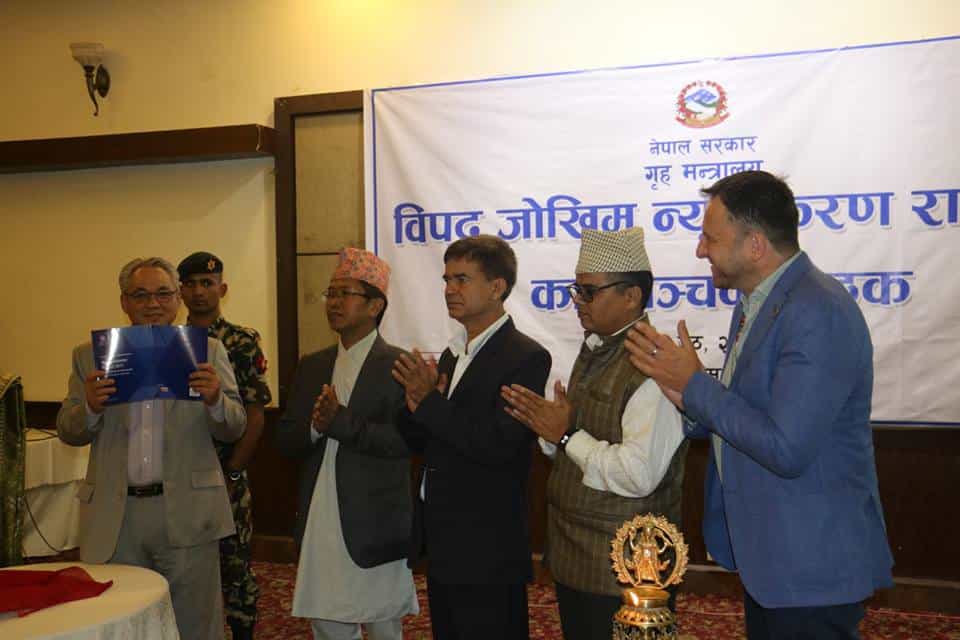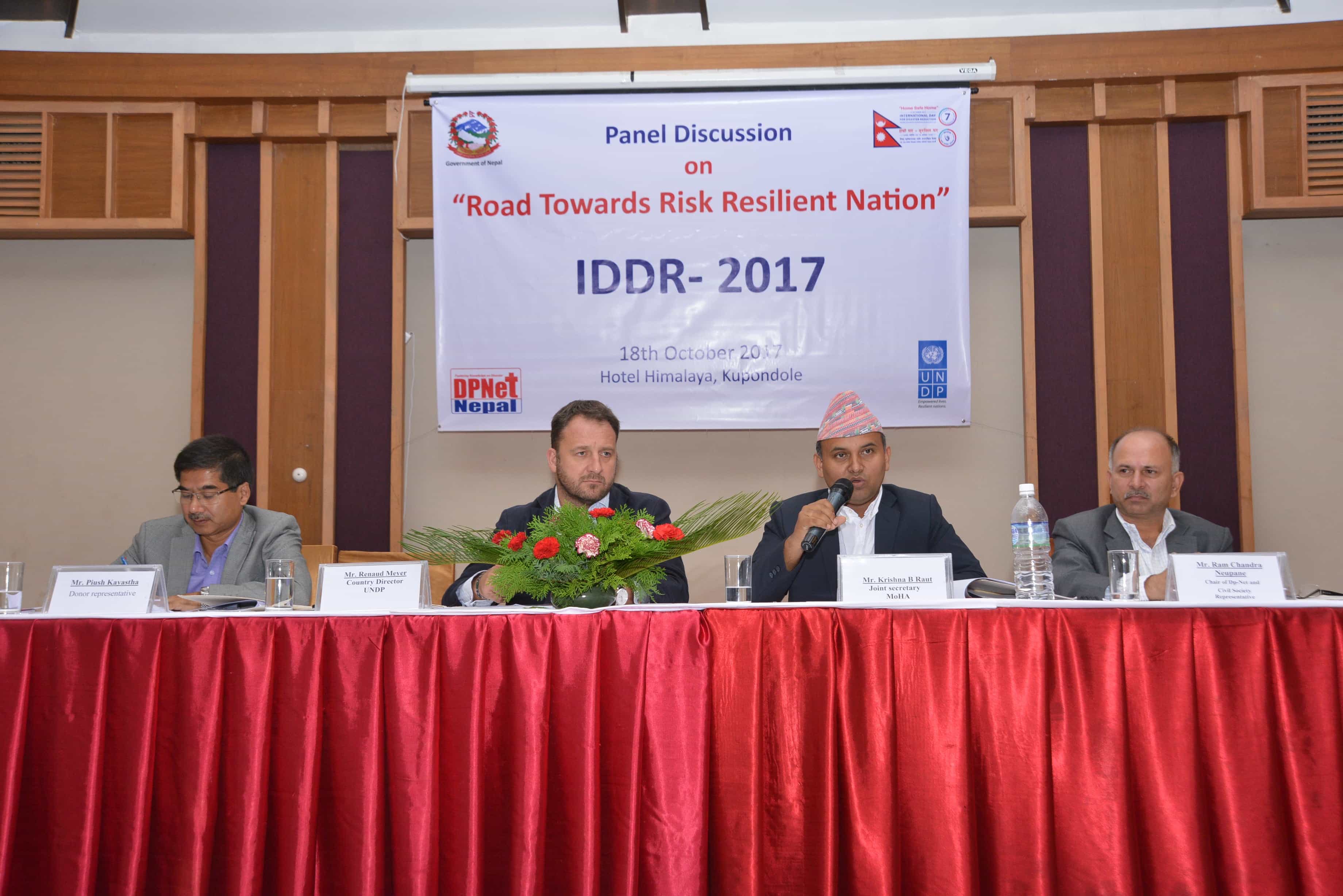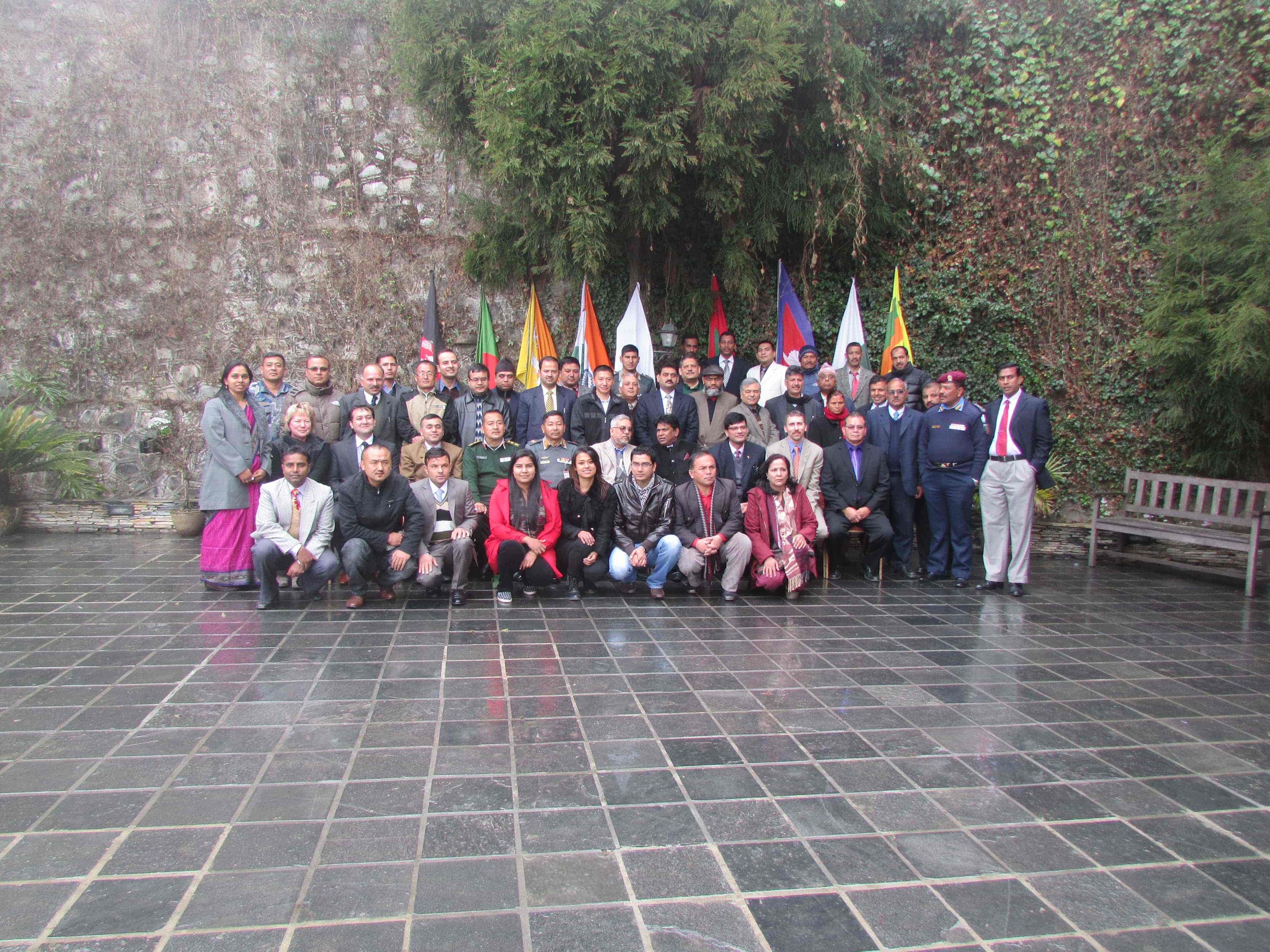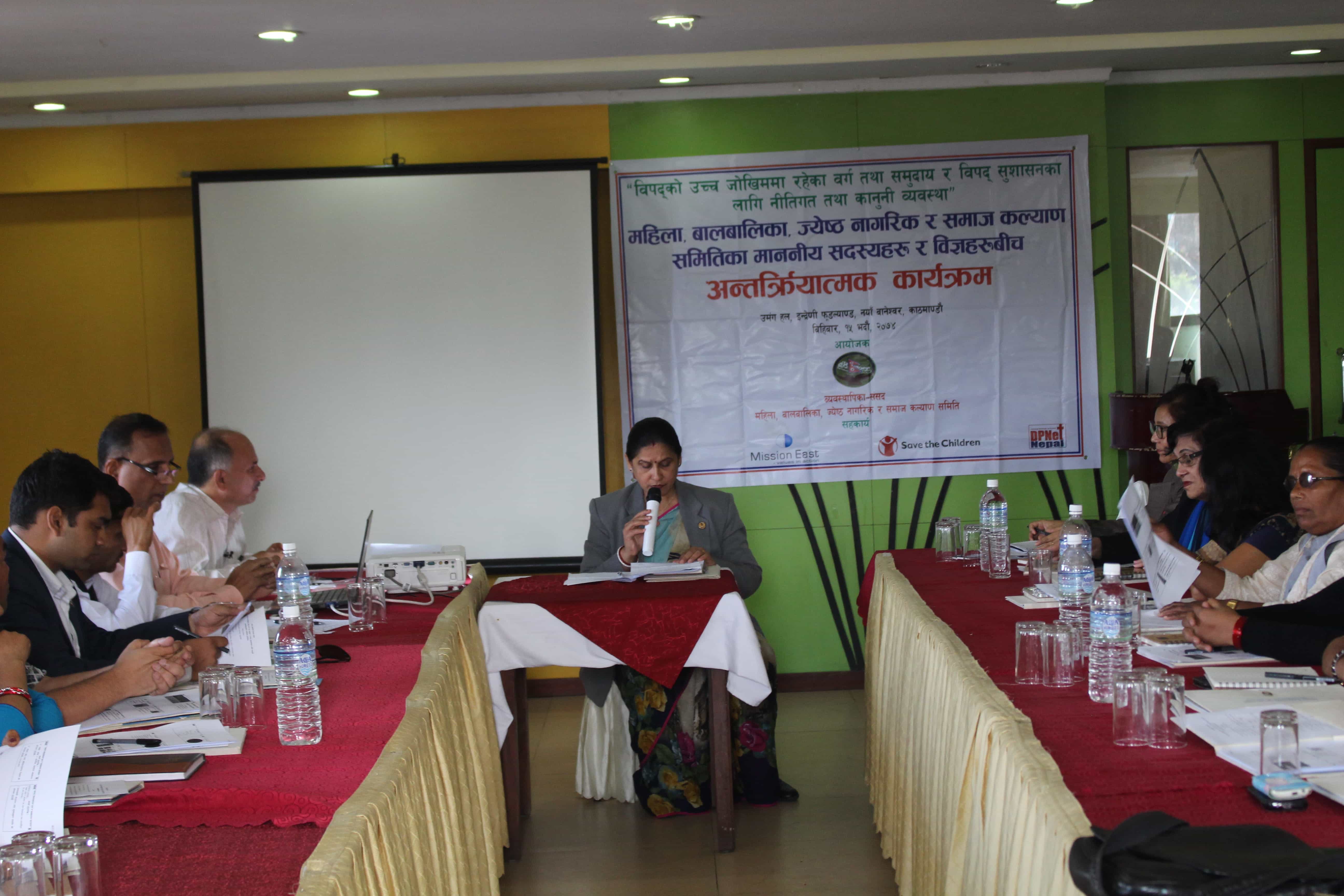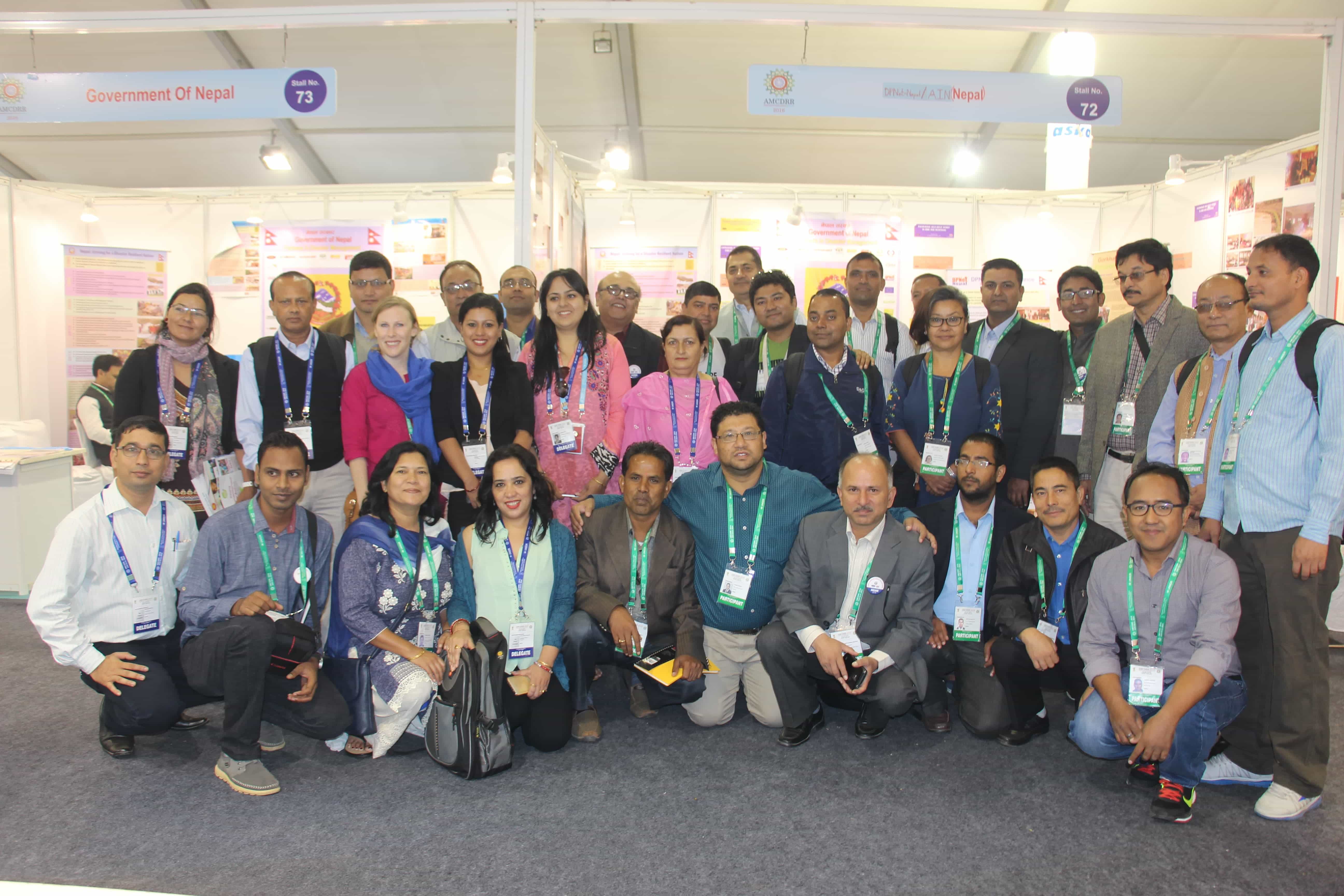DPNet Discussion on the Sixteenth Plan: DRR/CCA Perspectives and Recommendations
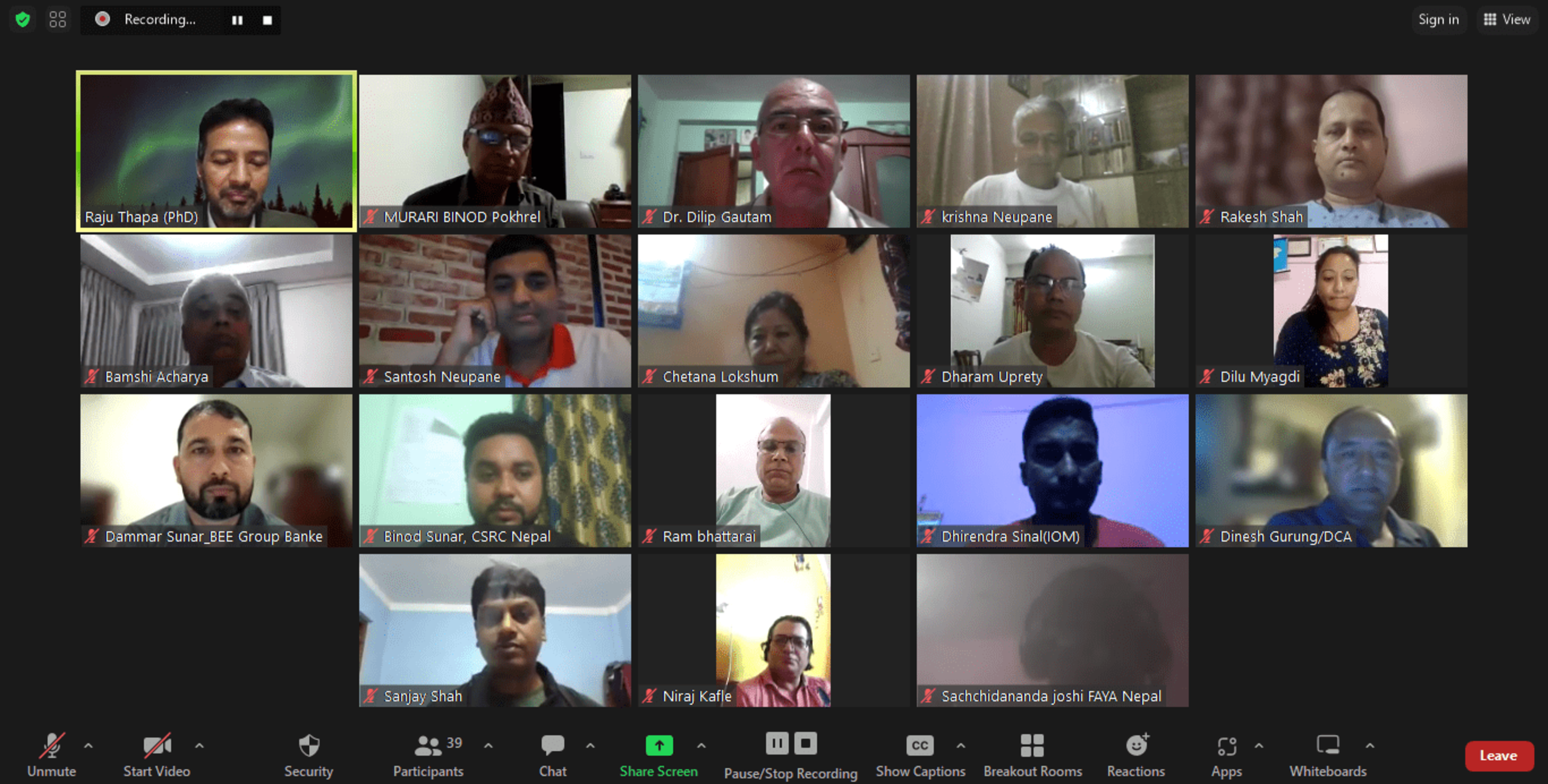
On September 24, 2023, DPNet Nepal organized a virtual interaction session titled "DPNet Discussion on the Sixteenth Plan: DRR/CCA Perspectives and Recommendations" using an online platform. The purpose of this session was to deliberate on the "Approach Paper of the Sixteenth Plan (Fiscal Year 2024/25-2028/29)," which has been formulated under the theme of "good governance, social justice, and prosperity" by the National Planning Commission(NPC). Additionally, the session served as a platform for experts and stakeholders in the field of DRR to assess the relevance and value of the developed approach paper.
The program began with a warm welcome from Dr. Raju Thapa, the Acting Chair of DPNet Nepal, to all the participants. He acknowledged the presence of the delegates in the meeting and outlined the discussion's objectives. He described the modality of the Fifteenth plan and shared the concept design of the sixteenth plan to be discussed. He stressed the need to properly include DRR in the sixteenth plan as it will clarify the budget issues and proper implementation of the existing policies for enhanced disaster risk reduction and management. Dr. Thapa shared that the insights gathered from the discussion and the recommendations will be compiled, consolidated, and shared with the NPC.
Mr. Bamshi Kumar Acharya, DRRM Policy and Governance Expert delves into the structure of the fifteenth plan, using it as a point of reference for the development of the sixteenth plan. He initiated his presentation with a concise introduction to three significant highlights. Firstly, he emphasized that the Fifteenth Plan encompasses a wide array of initiatives, ranging from ambitious endeavors to crucial matters, while some challenges remain unaddressed. Secondly, he highlighted the substantial alterations in policies and practices that have transpired since the Fifteenth National Plan. He discussed how these changes, in comparison to previous approaches and insights, pose relevant challenges for incorporation into the sixteenth plan. In the third point, he underscored the transformation in the framework between the Fifteenth and sixteenth plans. He underscored the objectives of the sixteenth plan in which the major theme is good governance, social justice, and reach to prosperity and all these themes are interrelated with DRRM. Three strategies are there to fulfill those objectives. The sixteenth plan stands out from its predecessor in a favorable manner, as it allocates sufficient room for the involvement of various entities such as private, government, non-governmental, federal, provincial, and local levels, each categorized and included explicitly. Another highly influential aspect was the integration of research and development into the plan. He emphasized that in the earlier fifteenth plan, DRR was included in clause no. 10.8 while the recent plan has provisioned in the 11th clause out of 12. The forthcoming work will be focused on addressing the content of point 11.
Mr. Acharya stressed that there were substantial changes in the DRRM scenario in the Fifteenth and Sixteenth Plans as there were some policy interventions in between the Fifteenth and Sixteenth plans including disaster risk financing, early warning, fund mobilization, shock responsive, volunteer, etc. Mr. Acharya advocates 10 points basis for developing 16 plans, they are; constitutional provisions, existing policy and legal provisions, long-term vision 2100, mid-term evaluation of the Fifteenth plan, the election manifesto of political parties, experiences from implementing federal governance system, Sustainable Development Goal (SDG), plan of promoting from LDC, various international commitments and change in a global context. He emphasized that it was crucial for the relevant stakeholders to collaborate effectively and provide recommendations for their actions. He asked, “What might have been the primary intervention and the specific quantitative target?” He stressed that it was high time to accumulate all the recommendations and submit them to NPC. He inquired about what could have been involved in transitional change. The context related to the budget, the scenario of local-level involvement on the frontline, and whether proper implementation was happening or not were some of the contexts.
Mr. Ram P. Bhandari Technical Advisor DPNet, shed light on the gaps and recommendations in the planning process. He emphasized that Chapter 2 of the Sixteenth Plan discusses the Fifteenth Plan, while Chapter 3 provides an overview of challenges. However, a critical issue remains unaddressed in both chapters. He highlighted, despite addressing agriculture the lack of a connection between agriculture and climate change is missed. Additionally, Chapter 10 completely overlooks the crucial topic of fragile construction. While there is mention of inferior construction quality in discussions about physical infrastructure, the aspect of infrastructure-induced disasters is neglected. The absence of a clear objective in the 4th chapter hampers the effective achievement of goals. In the 11th point, the sectoral strategy needs to offer more extensive details on mitigating natural and human-induced disasters and reducing associated risks. He highlighted in previous content, that disaster management was encompassed, especially within the context of water-induced disasters. However, the Fifteenth Plan, adopted a broader perspective, whereas the Sixteenth Plan seems to have narrowed its focus. To enhance comprehensiveness, it should incorporate and enrich sustainable goals and embrace green governance principles.
Dr. Dharam Raj Uprety, Technical Advisor DPNet, acknowledged that the concept paper of the Sixteenth Plan was not satisfactory. He stressed the financial loss of thirty billion in 10 years, but the plan has not considered this issue. In the challenge section, it seems climate is neglected and not regarded, which can create a problem in funding and aid assistance from the international level so the need for recognition was felt. In the 11th point, the term “disaster prevention” should be revised to “hazard/risk prevention and mitigation” since it's important to acknowledge that disasters cannot be entirely prevented. He stressed the need to address the significance of disaster insurance. Furthermore, it mentions fossil fuels but overlooks renewable resources. Private sector involvement and investment should receive more attention. He concluded by saying that the document lacks the incorporation of risk-informed development and climate-smart technology.
Dr. Dilip Gautam Freelancer Consultant, recommended some changes and modifications; in the context of the challenges, the 26th point needs to be added as high risk of climate and disaster risk. He further said that the additional word ‘sustainable’ needs to be added to the 3rd Goal “Enhancing the standard of living and the economy to emphasize sustainable prosperity” instead of just sustainability for resilience development. Moreover, the 11th point, “protection of nature and biodiversity, disaster preparedness, and sustainable development” needs to be modified to “protection of nature and biodiversity, climate and disaster risk management so that the importance of climate is incorporated. The promotion of sustainable and green economic growth with financial stability and economic advancement needs to be modified as "promotion of sustainable, green, and inclusive development” as it integrates the concept of sustainable development ahead of climate emergence. He further emphasized the need to address both natural and human-made disasters along with the need to address the concerns regarding the conservation and protection of watersheds and climate along with the conservation of fertile land and forest.
Mr. Krishna Neupane Executive Director Association of District Coordination Committees of Nepal, emphasized to overview of the policy provision of DRRM in order to address the possible changes. He elaborated on the cross-cutting nature of disaster in all the sectors. He emphasized the importance of learning from past challenges in implementing the 11 points and identifying measures to address them. Ensuring resource allocation was a key concern, and he questioned how this could be guaranteed. He also raised the issue of resilience and how the Sixteenth Plan aims to ensure it. Furthermore, he highlighted the need for sustainable disaster response planning within a five-year reduction timeframe, which he will elaborate on in written form.
Mr. Kedar Neupane, Former Secretary of the Government of Nepal discussed the situation that this Sixteenth Plan in the New normal situation, was different from the previous one. He stressed the need for compulsory disaster risk mapping at all levels, including municipalities and rural areas. He called for citizen awareness from policy to implementation, emphasized an early warning system, and urged the inclusion of international commitments, like the Sendai agreement, in our objectives. Mr. Neupane recommended its inclusion of diverse sectors and perspectives, including health, education, and infrastructure. He also called for awareness among all the ministry’s DDRM units.
Dr. Raju Thapa concluded the discussion by stressing that, although the DRR-related context had been mentioned in all the existing acts, regulations, and action plans, none of the acts clarified the fund requirement. So, the necessity has evolved to incorporate DRR along with funding and budget planning. He urged to share possible recommendations and suggestions by 26 September, and the final would be shared with NPC on 27 September. He requested Mr. Bamshi Kumar Acharya to shape the framework, and the other team would be working based on that framework. He closed the session by thanking all the participants for their presence.
